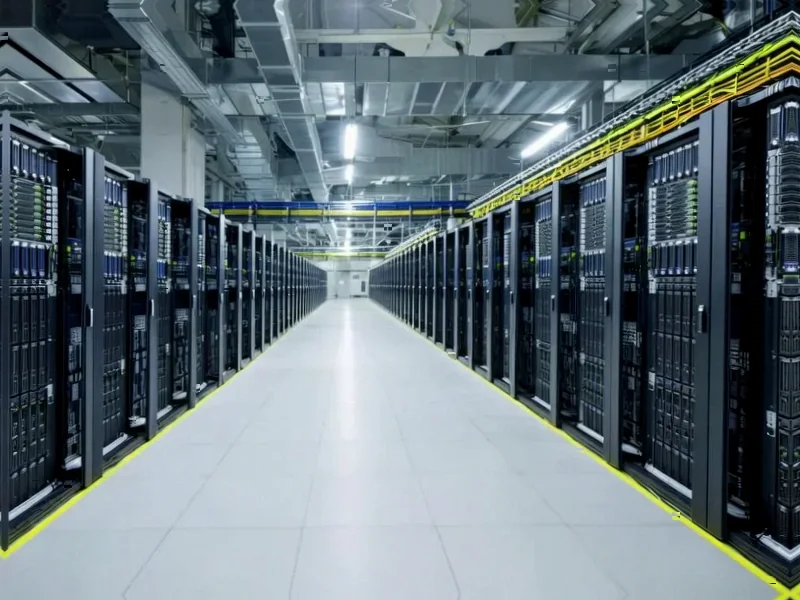According to Techmeme, Microsoft CEO Satya Nadella revealed in recent comments that the company has NVIDIA GPUs sitting in racks that cannot be powered on due to insufficient energy availability and data center space constraints. Nadella specifically stated that compute capacity is no longer the primary bottleneck for AI scaling, but rather power infrastructure and physical data center limitations. The Microsoft CEO also indicated concerns about over-investing in current-generation NVIDIA GPUs given the rapid pace of hardware advancement, highlighting the limited useful lifespan of AI accelerators as newer, more capable models emerge annually. This admission from one of the world’s largest cloud providers signals a fundamental shift in the constraints facing AI infrastructure expansion.
The Coming Grid Crisis
Nadella’s comments reveal what industry insiders have been quietly discussing for months: the electrical grid simply cannot keep pace with AI’s explosive power demands. While much attention has focused on GPU shortages and supply chain constraints, the real bottleneck is emerging at the substation level. Major cloud providers are now competing for limited power capacity in regions that traditionally supported data centers, with some analysts predicting that available power could become the single most valuable commodity in technology infrastructure. The situation is particularly acute because AI workloads consume dramatically more power than traditional cloud computing – a single AI model inference can require hundreds of times more electricity than serving a web page or processing a database query.
The GPU Obsolescence Time Bomb
Nadella’s caution about over-buying current-generation NVIDIA hardware points to a deeper strategic dilemma facing cloud providers. The AI accelerator market is evolving at an unprecedented pace, with each new generation delivering substantial performance improvements over the last. This creates a dangerous calculus for infrastructure planning: deploy today’s hardware and risk rapid depreciation, or wait for next-generation chips and fall behind competitors. The useful economic life of AI accelerators may be shrinking to just 18-24 months, dramatically faster than the 3-5 year depreciation schedules used for traditional server infrastructure. This accelerated obsolescence could create massive write-downs for companies that miscalculate their deployment timing.
The Infrastructure Arms Race
What Nadella didn’t explicitly state is that Microsoft and other hyperscalers are now engaged in a quiet but intense competition for power purchase agreements, grid interconnection rights, and suitable land for new data centers. This infrastructure arms race extends beyond traditional technology markets into energy markets, real estate, and regulatory approvals. Companies that secure favorable power contracts and build relationships with utility providers may gain sustainable competitive advantages that cannot be easily replicated through technology alone. We’re witnessing the emergence of a new class of infrastructure moat – one built not on software or algorithms, but on megawatts and transmission lines.
Geographic Shifts and Regional Implications
The power constraint problem will inevitably reshape the geographic distribution of AI infrastructure. Traditional data center hubs like Northern Virginia and Silicon Valley are already experiencing power capacity limitations, forcing companies to explore secondary and tertiary markets with available electricity. This could accelerate development in regions with abundant renewable energy resources or underutilized industrial power infrastructure. However, these locations often lack the fiber connectivity and technical workforce of established tech hubs, creating new challenges even as they solve the power problem. The coming years may see the emergence of “AI power zones” – specialized regions optimized specifically for energy-intensive AI workloads rather than general cloud computing.
Investment and Strategic Consequences
For investors and technology leaders, Nadella’s admission should trigger a fundamental reassessment of AI infrastructure economics. The era of simply buying more GPUs is ending, replaced by a more complex calculus involving energy procurement, real estate strategy, and hardware refresh cycles. Companies that master this new infrastructure reality will likely outperform those focused solely on algorithmic innovation. We may also see increased vertical integration, with cloud providers investing directly in power generation or forming closer partnerships with energy companies. The next wave of competitive advantage in AI won’t be measured in teraflops alone, but in megawatts secured and utilization rates achieved.





Your point of view caught my eye and was very interesting. Thanks. I have a question for you.